Just a quick shout out from the east coast and W.L. Gore. I forgot my camera in all the craziness in my life right now, so I’m limping along with the camera in my Crackberry. But the one thing that is for sure is that if you thought W.L. Gore only made Gore-Tex fabrics for outerwear, you are very mistaken.
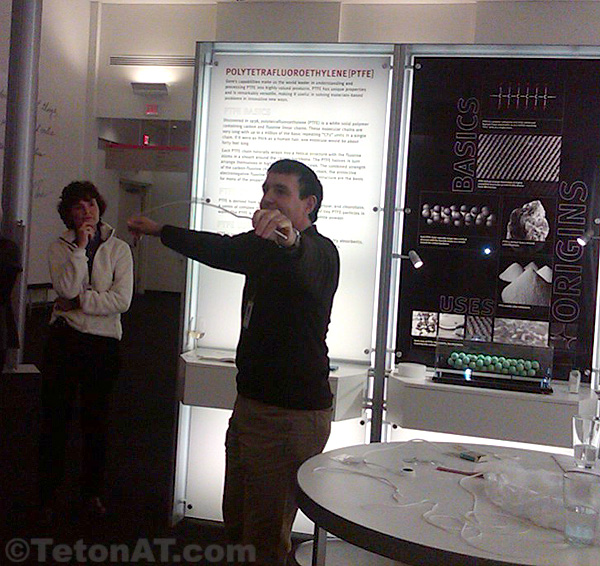
The miracle behind all the success of W.L. Gore is PTFE, or Polytetrafluoroethylene, which is carbon…surrounded by a bunch of fluorine and gives it it’s hydrophobic properties. Actually, it’s not just PTFE, but really expanded PTFE, which give it more breathable characteristics. One interesting thing W.L. Gore found out when trying to expand PTFE is that when done slowly the PTFE material would break, but when done quickly, it expands nicely. Kinda the opposite of Play-Do. The expanded PTFE is also very strong and stable at a molecular level, making it great for engineering applications across a wide variety of fields.
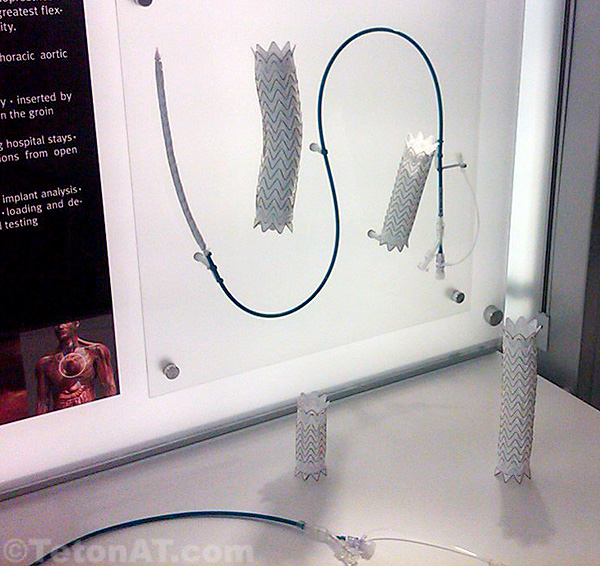
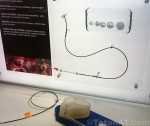 W.L. Gore is involved with many different manufacturing processes to make products in the biological, aerospace, and clean fuel technologies. In the biological field, W.L. Gore makes patches for the human heart for babies whole are born with a hole in there blood pumper, as well as stints for arteries that might be clogged or collapsing. Both of these things are inserted into the persons body by using arthroscopic devices that transfers the items in a compact form, and then unravels them at the designated location. Very cool stuff.
W.L. Gore is involved with many different manufacturing processes to make products in the biological, aerospace, and clean fuel technologies. In the biological field, W.L. Gore makes patches for the human heart for babies whole are born with a hole in there blood pumper, as well as stints for arteries that might be clogged or collapsing. Both of these things are inserted into the persons body by using arthroscopic devices that transfers the items in a compact form, and then unravels them at the designated location. Very cool stuff.
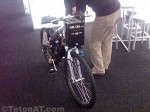 In addition, W.L. Gore produces and material that facilitates the production of electrical power with the use of Hydrogen. It’s PRIMEA material is used to alter the properties of Hydrogen and Oxygen to make power and is placed in fuel cells…and a major player in the future of clean fuel technologies.
In addition, W.L. Gore produces and material that facilitates the production of electrical power with the use of Hydrogen. It’s PRIMEA material is used to alter the properties of Hydrogen and Oxygen to make power and is placed in fuel cells…and a major player in the future of clean fuel technologies.
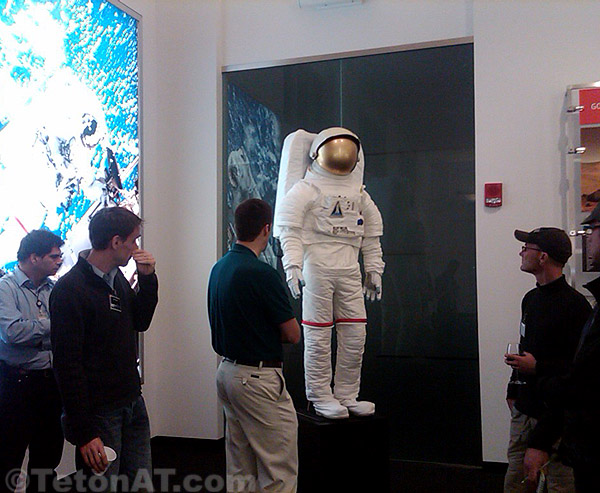
Though Gore-Tex coats seem high tech to use, the space suits W.L. Gore makes for NASA are way more advanced and are able to withstand a wide variety of temperatures. In space, an astronaut will experience temperatures ranging from 200 degrees when working on the sunny side of the space station, to extremely cold temps on the shady side.
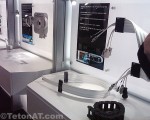 W.L. Gore also makes ropes that don’t stretch and reduce the amount of heat buildup, providing increased strength and durability. The also make material that is used in electrical cables that is able to insulate multiple cables from each other and provide a safe way to transfer information form one location to another. Pretty cool stuff. Gotta run…ciao for now!
W.L. Gore also makes ropes that don’t stretch and reduce the amount of heat buildup, providing increased strength and durability. The also make material that is used in electrical cables that is able to insulate multiple cables from each other and provide a safe way to transfer information form one location to another. Pretty cool stuff. Gotta run…ciao for now!

Why dosent our body reject gore tex? Is it surounded by something else or what?
Our body doesn’t reject Gore-Tex because it is SO stable. The Fluorine to Carbon bond is very strong and is extremely hard to break…so there really isn’t anything for the body to reject. In fact, the body will actually attach itself to and grow around the Gore-Tex in the long run, making it more effective. Pretty cool stuff.
Is that the same science behind why our bodies don’t reject Junior Mints? Junior Mints must be really stable too. 😉
http://video.tiscali.it/canali/truveo/487_784422124.html
Not sure what the molecular makeup of those things are Joshua, but my guess is that they come out…looking very much like they did when they went in.
Hey Steve,
Agreed, Gore-Tex is cool. But isn’t PTFE the same stuff found in non-stick fry pans and teflon? This shit gets in our bodies (my old man is a research doc, he tested random people for various chemicals and found that 100percent had PTFE in their bodies).
I love technology, too, but am a little wary of its side effects.
What are your thought?
Yeah…PTFE I think is in Teflon. Gore said that the artery stints and heart patches they have last 100 years…with no side-effects. These products are not new an have been in use for years now.
here is a little video illustrating the breathablilty differences (or lack there of??) between event and gore-tex.
http://www.youtube.com/watch?v=QdPZ7J_53zk